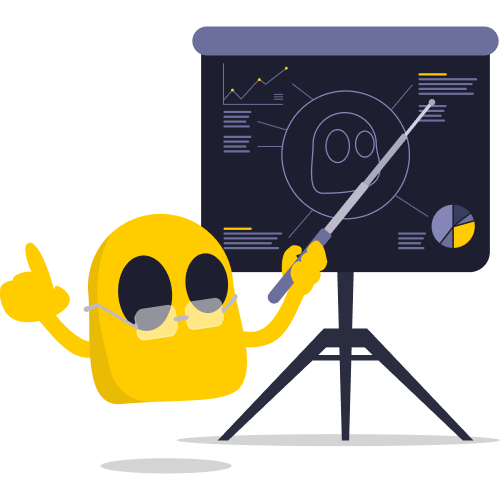John Dewey once said, “If we teach today as we taught yesterday, we rob our children of tomorrow”. Never have his words had more weight than they do now, a century after he said them.
Education is constantly evolving, and it’s only a matter of time before the classic classrooms we’re familiar with become obsolete. Online lessons and digital learning solutions skyrocketed in popularity in 2020, and are still favored post-quarantine, while the advent of AI is taking over all online spaces, including education.
Implementing technology into schools makes everyone’s life a little easier, but its potential stretches far beyond convenience. It could change education as a whole. The question is, what does this mean for students? To answer this, we first have to understand what’s in store.
EdTech Explained
EdTech, or Educational Technology, refers to any digital tool used to facilitate learning. It aims to improve academic outcomes by optimizing and enhancing the experiences of both students and teachers.
It’s a relatively young approach to education, and by nature, is a system set to rapidly change. Still, EdTech as we know it has already made its mark and has proven itself to be an effective approach to academics – one students and teachers have come to prefer over classic learning tools and methods.
Types of EdTech

EdTech is an umbrella term that includes any hardware or software that was created to be used in a learning environment – devices, websites, virtual reality apps, and even artificial intelligence programs. It also includes learning methods that incorporate or rely on technology, like gamification.
As you can already see, EdTech covers a wide spectrum and can be applied to schooling in a variety of ways. Here’s a breakdown of its most popular iterations so far.
1. Hardware
Just as notebooks replaced chalk and slates, computers are quickly blowing pen and paper out of the water. They’re efficient and make everything – from collaboration to presentation – easier.
Beyond the usual tasks we rely on computers for, tablets and e-readers remove the need for hefty (and pricy) physical textbooks. They can also be customized for various accessibility needs, and devices like smartphones can capture or record lessons for future reference – if the classroom allows it, of course.
Another example of physical EdTech is a digital whiteboard. Teachers can write or draw on these interactive screens with their fingers or a stylus, removing the need for stationery. Digital whiteboards often have customization options and sophisticated models can even access file libraries on a local network or be used to browse the internet. Anything written down on these interactive whiteboards can be saved and shared with students, too, eliminating the chance that someone accidentally misses something important.
2. Learning Management Systems
Learning management systems (LMS) are online platforms educators can use to streamline all aspects of their work, including task management, course creation and delivery, and assessment. An LMS also makes course material easily accessible to students and centralizes everything they need to study, participate in lessons, and submit assignments.
These systems are considered education hubs, designed to improve productivity all around – and they’re not limited to schools. More industries are beginning to implement LMS software for training, workflow, and administration.
3. Virtual Classrooms
As the name implies, this is where learning happens, but online instead of in a traditional classroom setting. Virtual classrooms are often integrated into LMS software and typically make use of features like video conferencing, digital whiteboards, screen-sharing, and real-time chat.
A virtual classroom can be synchronous, meaning the teacher and students are all present and participating in a live lesson; or asynchronous, where students can access lessons according to their own schedule – so long as they engage and participate within a designated time frame.
4. Gamification
Gamification is the utilization of game mechanics in non-game applications or activities to increase engagement or encourage participation. Duolingo is a prime example of gamification. By adding badges, leaderboards, streaks, leagues, and experience points, people are incentivized to keep at it, and rewarded for maintaining their practice.
The same tactics are effective in classrooms as studies show that making learning interactive and fun leads to improved participation and retention. Scoreboards, user levels, win streaks, unlockable bonus material, fun challenges, and friendly competition can be applied to course material to make studying feel less like a chore. It may help students feel rewarded for their hard work and stay invested in their studies.
5. Augmented Reality and Virtual Reality
Although Augmented Reality (AR) and Virtual Reality (VR) are two sides of the same coin, they serve different purposes. AR overlays digital content onto the real world. It can use software – think of Pokemon Go – or hardware, like AR glasses. VR uses hardware, like VR headsets, to generate a digital environment people where can fully immerse themselves.
In either case, AR and VR can work wonders in education. Instead of reading about Ancient Egypt or the dinosaurs, students can virtually experience it first-hand for themselves. Besides immersive history lessons, this technology is especially handy when it comes to science experiments that require hazardous, expensive, or difficult-to-acquire materials.
Early studies show students reporting VR helps to enhance their learning experience by improving their visualization and understanding of subjects. Both of these technologies still have a long way to go before they’re the stuff of science fiction, but for the time being, they’re effective enough to offer students a fun and interactive way to learn by experience, albeit a digital one.
6. Artificial Intelligence
Perhaps the most controversial of all, AI gets a bad rap. Especially in education. Most have come to associate it with plagiarism and technical unemployment, but it’s so much more than that. In fact, you likely interact with AI every day when you engage with social media platforms or use digital assistants, spell checkers, and even Google.
A lot of software used in EdTech — namely LMS, AR, VR, and gamification — is powered by AI. Many schools use AI assistants for administration, while the aforementioned spell checkers are a must-have for creating learning modules and polishing assignments. AI is also often used to detect and prevent cheating in online tests and exams.
Still, it goes even further. AI can personalize learning for each student. It can recognize speech and translate what younger children are trying to communicate. It can assist with research, writing, and breaking down complex concepts for digestible learning. In a few cases, it could even manage entire school systems, from administration to cybersecurity. Like it or not, AI is here to stay – and it’s not an inherently bad thing, especially if it’s helping students get ahead in their learning journey.
The Benefits of EdTech
As novel as EdTech is, it’s not merely a way to bedazzle learning. Technology can, and does, have a positive impact on education – and provides more than a few perks we should all be taking advantage of. Here’s how EdTech is transforming education for the better.
1. Learning Is More Accessible
In the case of virtual classrooms, educational apps, and LMS software, EdTech provides constant and continuous access to learning resources. This flexibility goes a long way for students who have other responsibilities, or who work better learning at their own pace. It also gives equal opportunity to students outside of urban areas, or who can’t make it to a physical classroom. Online schools are typically more affordable than traditional schooling as well, with transparent fees and almost none of the hidden costs that tend to creep up throughout the year.
Let’s not forget, EdTech also helps students by replacing traditional schooling methods with more inclusive approaches. Teachers and students can tailor their educational environments to accommodate learning and physical disabilities, language preferences, or different intellectual needs. In most cases, students can learn at their own speed, and at their convenience.
Want to travel the world while you work or study? Get CyberGhost VPN so you never have to worry about getting locked out of your online workspaces. We’ve got servers in 100 countries, so you can use IPs from any country to get around annoying restrictions that prevent you from getting work done.
2. Adaptive Learning Might Be More Beneficial to Students

Although more research is needed to determine the full academic impact of adaptive learning, several studies suggest it has the potential to be more effective than traditional teaching methods.
Oregon State University has outlined a variety of benefits associated with adaptive learning, including improved academic performance in university students. Students reported heightened motivation, faster learning, and a better understanding of their lessons. It also reported widespread satisfaction with numerous software features – including real-time feedback, step-by-step instructions, and customization options. Students also said they developed better study habits and felt less stressed or overwhelmed by their work.
3. EdTech Prepares Students for the Real World
We’ve all been told, at some point, that school is practice for the future. Be it the old myth that schools were designed to train children for factory work, or the idea of school teaching a variety of good behaviors necessary in the workplace, like punctuality, dress code, accountability, or work ethic. The problem is, society has changed immensely in the last two decades, and traditional schooling, in many ways, doesn’t apply anymore.
Most jobs require computer literacy now, and job hunting has – for the most part – swung entirely to online spaces. According to Forbes Advisor, 93% of employers conduct interviews remotely, while 98% of workers say they’d prefer a partly remote job. UpWork estimates 22% of the US population will work fully remote jobs by 2025, with the likelihood of this number increasing gradually over time.
In 2021, YouGuv surveyed 3670 US teens aged 13-17, to discover what their dream jobs were. “YouTuber or professional streamer,” “professional gamer,” and “influencer” all ranked among the top choices, alongside other careers in entertainment, including “professional athlete,” “musician,” and “actor/actress.”
4. EdTech Fosters Participation and Other Social Skills
You might think traditional schooling is superior when it comes to mingling, and in a lot of cases it is, but it comes with social pressure – something EdTech removes from the equation.
Research shows 31.9% of US teens struggle with anxiety disorders, while 36% of college students have been diagnosed with anxiety. A further 33% of college students claim their anxiety has interfered with their education.
EdTech could help people find solutions to some of these problems. Written online communication, like chats, emails, or comment threads, is often far less intimidating than talking face-to-face and can give a voice to those who otherwise might struggle to find one. Virtual classrooms, where students don’t have to be observed, might encourage students to participate more.
According to research by Polaris Teen Center, online platforms – like social media and multiplayer games – are a hub for adolescents to befriend each other. So much so that more than half of teens surveyed said video games made them feel more connected to others.
5. EdTech Is Convenient
EdTech isn’t only great for learning. It also improves the quality of life for students and faculty alike, because it streamlines most of the tedious labor.
AI and automation can bear the brunt of most administration and assessment needs. An LMS decreases the workload for teachers when it comes to lesson planning, course materials, and moderation. It makes note-taking, collaboration, submissions, and participation easier for students too.
Digital learning materials save distribution time and printing costs. Recorded lessons, AI assistants, and support bots are available 24/7 for students who might need refreshers, and they free up time for teachers. The greatest appeal of virtual classrooms is that you don’t have to leave the house to attend (or teach) your lessons. It doesn’t have to replace physical classrooms entirely either, but can be used supplementally by teachers to prepare classes in advance for leave or sick days.
These are only a few examples of how much easier EdTech can make life for everyone.
6. It’s Safer
A less talked about benefit of EdTech is an uncomfortable, but important one. Traditional public schools aren’t always safe or comfortable environments. In 2020, EdTech was one of the only ways to continue schooling while protecting students and staff from COVID-19.
This isn’t to say sheltering school children from everything is the way to go – or that eLearning is a perfect solution for avoiding dangerous situations. Cyberbullying and cybercrime are on the rise, but EdTech can be moderated. Since most online communication on learning platforms is relatively public, dangerous situations are easier to document and can be reported, addressed, and resolved with greater ease and to greater effect than in brick-and-mortar spaces.
Does EdTech Have Any Drawbacks?
Yes, but keep in mind that no system is perfect, and traditional schooling has just as many cons associated with it. Most of the drawbacks associated with EdTech can be prevented with appropriate caution. It’s worth noting some of these drawbacks are assumed, and more research is needed to prove the extent of any negative impact.
- Tech is expensive, and difficult to keep up with. Most people struggle to stay in the loop with the endless barrage of new models, software updates, and nifty gadgets that pop up every year. Acquiring, and then maintaining, EdTech systems for entire schools isn’t as easy as it may seem and often requires specialized IT consultants. It can also come with large upfront costs or subscription fees that are unaffordable to maintain. Especially when you consider most schools are sorely underfunded as it is.
- EdTech favors students of higher privilege. EdTech is almost exclusively a product of the developed world. If digital learning were to become the new educational standard, a large percentage of the global population would fall behind. It’s also a problem on a local scale. Not every student has access to computers or the internet – or an aptitude for digital learning.
- When misused, technology is detrimental to education and development. Technology could harm educational outcomes. It’s widely believed overexposure to technology has wrecked our attention spans and disconnected us from fundamental cognitive skills, language use, logic and arithmetic, and comprehension. Some argue technology will also destroy young learners’ motor skills, and kids of the future will lose traditional abilities, like writing. Technology can also be isolating, and ruin social skills by removing opportunities for face-to-face interaction.
- Too much tech can have negative health effects. Overexposure to technology can also cause or worsen a rainbow of ill health effects, including eye strain, aches and pains associated with musculoskeletal strain or injury, impaired sleep, exacerbated mental illness like anxiety and depression, and – when observed in children – even obesity, mood disorders, and behavioral problems.
- Troubleshooting is part of the package. As convenient as EdTech may be, one major downside is maintenance. According to Edweek, during COVID-19 school closures, 87% of educators reported spending more time troubleshooting than usual. The biggest problem here is that tech issues detract from teaching, but could also disrupt important work like tests, exams, or important assignments.
- Standardization is far away. EdTech is varied, but its quality control is severely lacking. Schools may be spoiled for choice but it comes at the cost of uniformity. No solution to standardizing EdTech has been put forward yet, so as it stands, EdTech is supplementary to traditional education. It can’t replace the credibility of traditional curriculums or qualifications… at least, not yet.
- Tech comes with privacy concerns. Data collection and consent, especially when children are involved, is a huge consideration many students (and parents) might not be well informed about. Algorithms tend to show bias as well, so profiling and discrimination in school environments and educational materials could increase. Not to mention cybercriminals are ever present, waiting for an opportunity to act. Add sensitive information to the mix, and it’s clear schools need strong cybersecurity measures to protect their students, and indeed their institutions as a whole.
CyberGhost VPN will protect your data, even if your school or workplace doesn’t. We safeguard your online privacy and safety with world-class encryption standards and adhere to an independently verified no-logs policy, guaranteeing your online activity and data will never be recorded or fall into the wrong hands.
Is EdTech The Future of Education?

Now that you know what EdTech and its implications are, we’re circling back to the most pressing question: What does EdTech mean for education as a whole?
The answer is progress. Education, much like technology, is always evolving. In the 1990s, virtual classrooms, using video game mechanics for homework, and AI were the stuff of sci-fi novels. Although our current implementation of EdTech is still in the early adoption phase and leaves much to be desired, it’s not a future dream anymore – it’s right here, in the present moment.
With a bit of fine-tuning, trial, and error, EdTech has every opportunity to become the new standard of education. It’s safe to say technology is fully integrated into society, and because of this, traditional teaching is, unfortunately, losing its value in our modern world. One day, it will become obsolete, even if that day is decades away.
EdTech’s benefits can’t be disputed. It makes education easier and more accessible for everyone and removes unnecessary burdens that detract from study. The most important quality, though, is how it incentivizes learning. Isn’t that the true value of education – curiosity, and a hunger for knowledge?
If technology makes people more studious, it’s a win for the world. As they say, the learners of today are the leaders of tomorrow. If EdTech helps to inspire great ones, who are we to argue?

Leave a comment